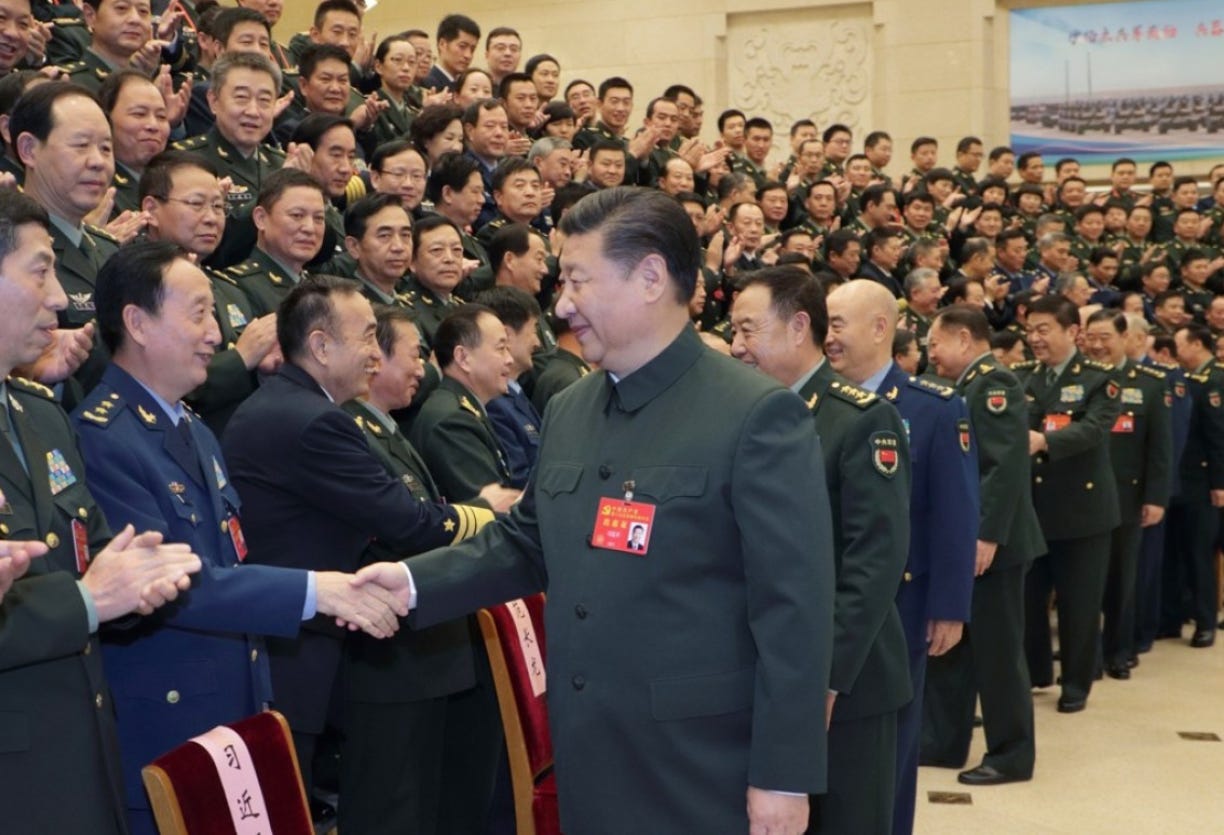Xi Jinping and PLA Leadership
The first part of this series focused on the Belt-Road Initiative – the flagship program aimed at developing a global manufacturing infrastructure centered in mainland China with a sea and land transportation network that will expedite the inward flow to China of raw materials needed for Chinese industry and the outward flow of finished goods and products to overseas markets.
This part focuses on other initiatives using the belt-road metaphor, including the Arctic Silk Road (北極 絲綢之路), the Space Silk Road (太空丝绸之路), the Health Silk Road (健康丝绸之路), and the Digital Silk Road (数字丝绸之路).
BRI EXTENSIONS
The Belt-Road Initiative has been extended by others that use the belt-road metaphor, as proclaimed by Xi Jinping in recent years, including the Arctic Silk Road (北極 絲綢之路), the Space Silk Road (太空丝绸之路), the Health Silk Road (健康丝绸之路), and the Digital Silk Road (数字丝绸之路).
Proposed by China in 2017, the Arctic (Polar) Silk Road extends the original BRI planned network to the Arctic Ocean in partnership with Russia. This extension would expand resource extraction for hydrocarbons and minerals and sea transport in the Arctic region. As noted by the USAF’s Air University, “the projected volume of the Arctic Shelf’s undiscovered oil and gas reserves is estimated to be around 90 billion barrels, 1,670 trillion cubic feet of natural gas, and 44 billion barrels of natural gas liquids, according to the estimates of the American Geological Survey.” Beijing’s goal is to transport goods through the Arctic from China to Europe, which reduces the distances involved by up to 20-30%, saving time, fuel and human resources.
The problem for China is that Beijing has no continuous land presence in the Arctic region and thus is not a member of the Arctic Five nations (Norway, Russia, Canada, Denmark, and the United States) nor the group of three nations proximate to the Arctic Circle (Iceland, Finland, and Sweden). The Russians are doubtless concerned about “Chinese encirclement” at least to some extent while the Arctic Five are all US allies and not interested in ceding anything in the Arctic to the Chinese. A solid allied response is the best antidote to Chinese meddling in the Arctic. The European Union’s economic sanctions against Russia have greatly slowed China’s Arctic aspirations along Russia’s periphery. And President Trump’s recent emphasis on Greenland as a strategic US asset is a direct response to China’s Polar Silk Road intentions, as noted here.
The Space Silk Road was proposed to extend the BRI into a new domain. Introduced in 2014 by the International Alliance of Satellite Application Services (ASAS), the purpose of the Space Silk Road is to create an entire range of indigenous Chinese space capabilities, including satellites, launch services, and ground infrastructure and supporting industries and service providers. A centerpiece is the development of the Beidou Navigation Satellite System (BDS), which is a direct competitor to the US’s Global Positioning System. These systems provide geo-spatial positioning of ships, submarines, and aircraft and support position, navigation and tracking for both civil and military purposes. BDS is intended to provide the backbone for these services for countries within the BRI, as well as to complete with the US for future Global Navigation Satellite Systems (GNSS) market share, which includes smart phones, vehicle-borne terminals, and wearable devices.
The US government has an ongoing multi-billion dollar GPS modernization program that is intended to improve GPS capabilities, harden the system against Chinese cyber attacks, and incorporate advanced technologies to make GPS more attractive than BDS.
While the original intention of the BRI promotes Chinese mercantilism, authoritarian capitalism, and trade practices outside international norms, the objectives of the Health (2015) and Digital (2015) Silk Roads are more insidious. They each serve as a mechanism for promoting the CCP’s vision of “universal rules and standards” around the world as a replacement for the Western-dominated international order, standards, and practices and are a direct assault on international standards in a struggle to control the future. Controlling the standards leads to controlling the emerging technologies that drive the future economy. The purpose of the Health Silk Road is to “demonstrate China’s leadership potential in the [global healthcare] field and to gain influence commensurate to its perceived weight in the international community.” The result would be the development of “a community of common health for mankind.” The devil is of course always in the details when the CCP proclaims fuzzy concepts such as this, and all of them have a money component embedded therein.
In this case, China seeks to export salable elements of “traditional Chinese medicine,” including Chinese-made medicines, vaccines, personal protective equipment, and various medical technologies and products made for export. More importantly, China seeks to control the production of the world’s supply of pharmaceutical drugs and their precursors, as well as gain control of the World Health Organization in order to promote if not mandate Chinese healthcare products and China’s overseas development assistance for health programs. The intended result is increasing world dependence on Chinese global healthcare solutions.
Perhaps the best countermeasure to China’s Health Silk Road is the constant reminder of the CCP’s response to the COVID pandemic, which included a refusal to share critical information on Chinese patients/casualties, China’s takeover of the WHO to camouflage Chinese culpability, and extensive efforts by China to make money on the misfortunes of others by selling Chinese vaccines and PPE. The CCP’s flat-out refusal to share medical data during the pandemic is a warning to the world that China’s Health Silk Road platitudes cannot be trusted.
Another countermeasure implemented on 20 January by President Trump was the signing of an executive order withdrawing the US from membership in the WHO. A key element of the EO was to cease negotiations on the WHO Pandemic Agreement and the amendments to the International Health Regulations, which efforts have been heavily influenced by communist China and are intended to hamstring US public health authorities to the benefit of Beijing. Other nations will likely follow suit, including Argentina.
The Digital Silk Road aims to create a spatial information system for the geographic regions covered by the BRI by promoting the seamless integration of telecommunications networks, artificial intelligence capabilities, cloud computing, e-commerce and mobile payment systems, surveillance technology, smart cities, and other high-tech areas among participating countries under the technical leadership of communist China. The Chinese are subsidizing the deployment of inexpensive, high-quality technology to build wireless phone networks and broadband internet coverage in Third World counties. Accepting those Chinese subsidies comes with strings because adopting Chinese technology means risking Chinese cyber espionage, surveillance, and monitoring while potentially fracturing the global internet by forcing the adoption of incompatible Chinese technology standards. This is particularly important as the telecommunications systems shift to 5G networks. Many countries (including the US, Japan, and Australia, have banned Chinese tech firms from their 5G infrastructures to minimize Chinese cyber espionage and preclude China from setting 5G standards that would promote cybersecurity vulnerabilities.
CONCLUDING REMARKS
This continuing series provides insights into the goals and objectives of key CCP strategic objectives, as well as their intentions and countermeasures that are being implemented by the US and its allies to thwart Beijing’s aims.
The next part will examine Made in China 2025 and complementary initiatives aimed at economic self-sufficiency, as well as countermeasures that are underway to disappoint Beijing’s hopes.
The end.





